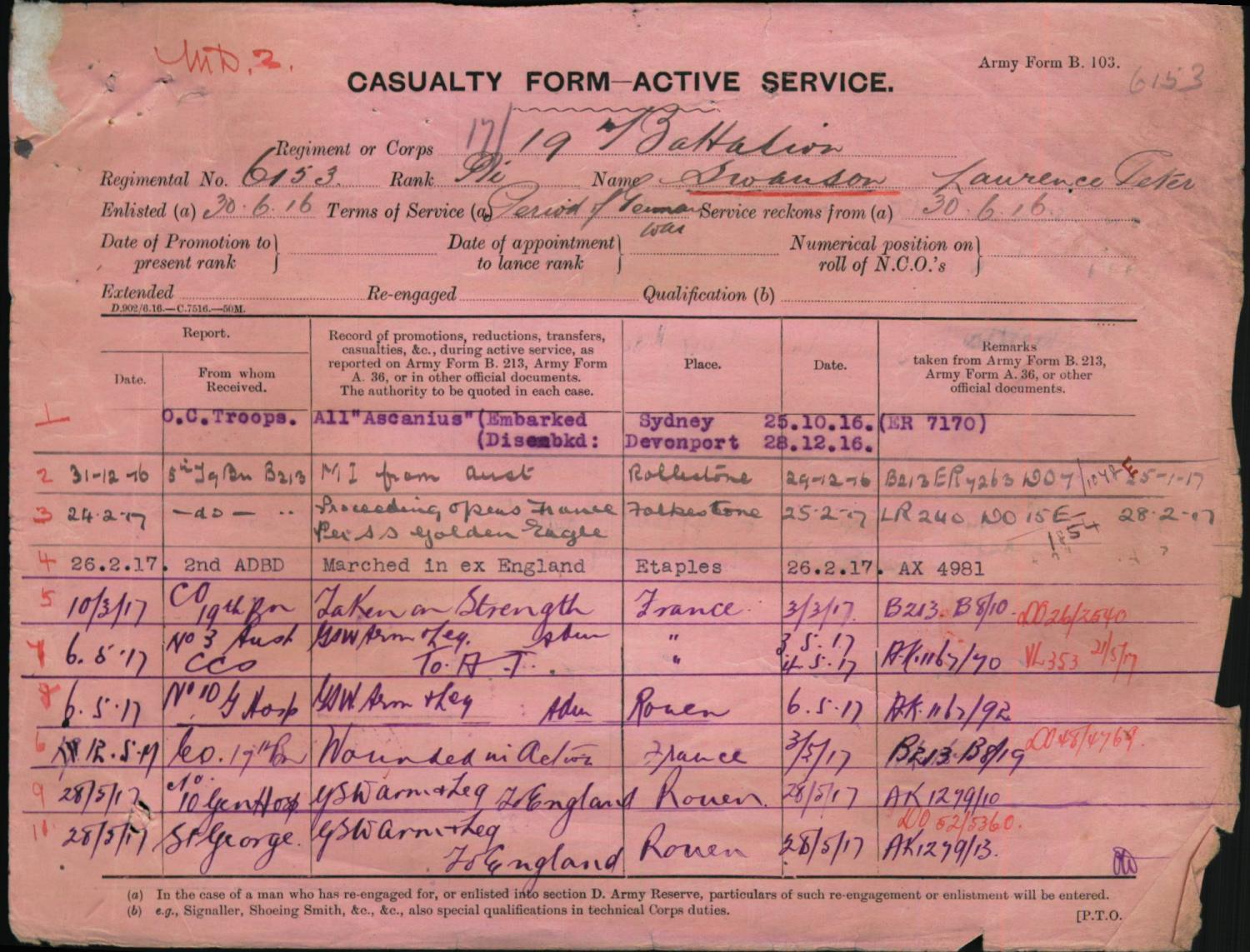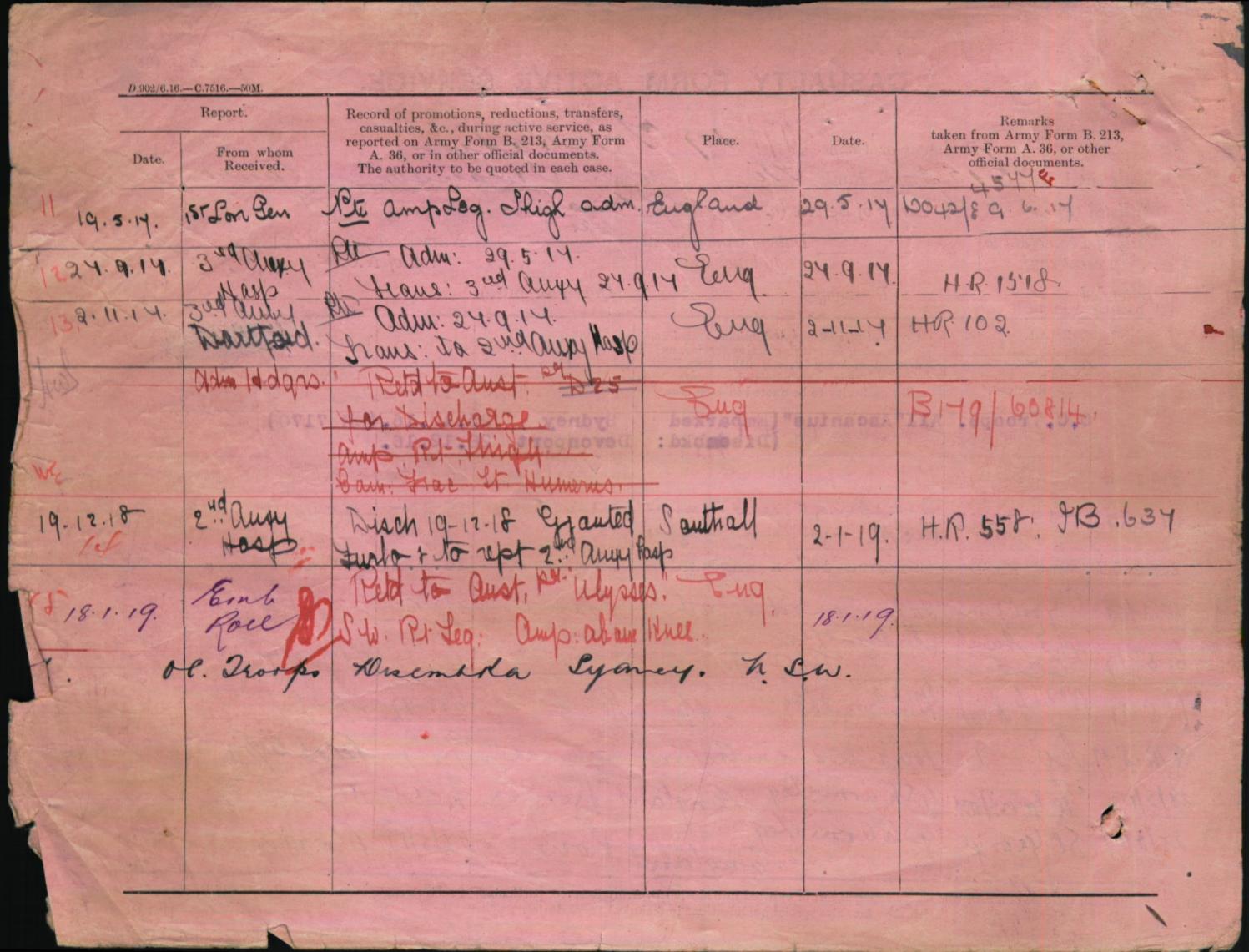Carolyn Foord
Style icon, Entrepreneur, Fashionista and Queen of Style.

" Laurence Peter Swanson, served in the 19th AIF Battalion in World War I. For me he was my uncle with the wooden leg.
- by Mark Radisich, Laurence Peter Swanson's nephew
My Mum's 'Uncle Peter', Laurence Peter Swanson, served in the 19th AIF Battalion in World War I. For me he was my uncle with the wooden leg. My older siblings knew Peter and spoke of him with some awe because of his experiences. Peter's medals were lost and he left no children. Now, as a retired veteran myself, I have made a point of wearing replicas of his medals-the British War Medal 1914-20 and the Victory Medal 1914-19-on ANZAC Day and Remembrance Day in honour of his memory, his deeds and the tragic sacrifices of so many. This is his story. Lest We Forget.
Peter was born on 11 October 1880 at rural Ringarooma near Scottsdale Tasmania, Australia. Of Swedish descent, Peter's parents migrated to Australia in 1874 where they lived first in Queensland and then moved to the colony of Tasmania in 1878. We don't know much about Peter's early years. But like it was for many, they would have been hard years. His dad found work as a farmer and miner. Peter's mother died about a year after Peter was born. Consequently, Peter's early childhood was in the care of his father, and three slightly older sisters. Peter also had one younger brother. As a young man Peter moved to New South Wales and he worked as a Horse Driver.
At the age of 36, he volunteered and enlisted in the Australian Imperial Force (AIF) on 30 June 1916 in Sydney. At the time there was a huge demand for Australia to provide reinforcements in France. Peter served in the 17/19 reinforcement of 19th AIF Battalion. He arrived in France in March 1917. The Battalion diary states they were at Noreuil, France (about 2.8km south of Bullecourt) on 3 May 1917 on the day Private Laurence Peter Swanson was wounded. Their attack that morning on the German HINDENBURG LINE was on Day One of the Second Battle of Bullecourt. They fell in ready to move at 12.20am and waited in the dark, then moved into their jumping off positions at 12.55 am. No smoking or lights were permitted.

Bayonets were not to be fixed until zero hour. All water bottles were to be filled. Men were warned against enemy gas attacks. 'Hun' bombs were to be used before their own. Sandbags were to be carried - one under each shoulder strap, one wrapped around the bayonet scabbard and entrenching tool, and one in the belt - presumably these were for the men to make defensive positions if needed. Prisoners were to be used to evacuate the wounded. All ranks were strictly warned not to take any papers, letters or documents likely to be useful to the enemy. Anyone having the misfortune to be taken prisoner was to give name, number, rank and regiment only. A Lieutenant BLUMER carried pigeons with him to communicate with Battalion Headquarters in the event of communications breaking down.
They went over the top at zero hour, 3.15am. 564 men from 19th AIF Battalion were in the assault. Peter was one of 359 casualties in the battalion before the battalion was relieved by the 4th AIF Battalion less than an hour later at 4.10am. Many other allied battalions received similar casualties at the same time in what was a major attack on the German lines. Peter was shot in the left arm and right leg. He survived but his leg was subsequently amputated in a hospital in London. Sadly, the Army's telegram to notify next of kin of his injury went undelivered. Peter's father had already died before Peter's wounding.
Peter was repatriated from England to Australia in March 1919. Army records show that at least one woman lay claim to Peter. Nevertheless, he subsequently lived in Caulfield, Victoria where he spent his remaining years as a single man, and an invalid. Loved by his extended family, he lived for another 40 years and died in Parkville in August 1959.

This Remembrance Day, show your support to RSL Australia by purchasing a poppy or donate today at
Lest We Forget

Share your own story or eulogy about a loved one, online in a safe environment for future generations. Please click below.
Share their story